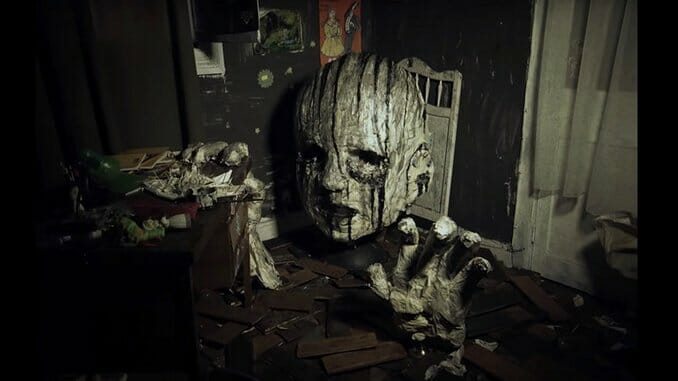The Wolf House Examines the Trauma of Totalitarianism through a Nightmarish Fairytale

Joaquín Cociña and Cristóbal León’s Spanish-German language film The Wolf House is equal parts surreal, tragic and disturbing, due to both its uncanny stop-motion animation style and the real-world inspiration from which it draws. Framed as a propaganda piece crafted by a sinister Germanic cult, portraying 100 lonely days of a young girl who runs away from their faction, the faux-film is proudly emblazoned with the cultural seal of Chile. This is the first hint that The Wolf House will be a vehicle for unpacking generational trauma.
The film follows the perilous journey of María (Amalia Kassai), a young German woman who has narrowly escaped the jaws of a Nazi cult but must now outrun a hungry wolf hot on her trail. The cult María flees is based in Southern Chile, making it an evident parallel to Colonia Dignidad, a German sect established in Chile in the early ’60s by a man named Paul Schaefer, who was about to go on trial for child molestation in West Germany before he was granted sanction to enter Chile. Colonia Dignidad gained notoriety during Pinochet’s fascist military rule from 1973 through 1990 as a facility used by the government for torturing and murdering suspected communists, as well as, it’s rumored, a home to many former Nazis evading conviction for their crimes against humanity, infamous Nazi doctor Josef “Angel of Death” Mengele among them.
As the wolf draws nearer, María stumbles upon a small house in the middle of the woods. She quickly makes herself at home. The house is ostensibly abandoned, save for two small pigs living in squalor in one of the bathrooms. María vows to raise the pigs as her own children, naming them Pedro and Ana. She clothes them, feeds them the little unspoiled food remaining in the house and excitedly tells them that she will teach them “everything that she knows.” But María finds it difficult to navigate what the cult has imparted on her, and complicated feelings surrounding pleasure, punishment and eugenic aesthetic ideals begin to find themselves seeping into her lectures to Pedro and Ana.
The Wolf House can feel sickening at points, mostly due to the ever-morphing vessels that serve as avatars for María, Pedro and Ana. Their corporeal forms emerge crudely shaped from clay, ooze onto the walls and windows as painted figures, grow bloated and disjointed as paper-mache, stitched together and dressed with felt and plush. Animation, specifically stop-motion, has an innate nauseating quality, making it the perfect medium for depicting the metamorphoses and deconstructions of the characters in The Wolf House. The titular lycanthropic abode was a real house that the filmmakers utilized to create the film’s uncanny, human-scale dioramas, the diligent craftwork of the years-long undertaking captured in the finished product’s every frame. By observing the jarring process of characters being created and destroyed in direct reaction to what they experience, the audience is reminded of the human psyche’s equally malleable nature.
-

-

-

-

-

-

-

-

-

-

-

-

-

-

-

-

-

-

-

-

-

-

-

-

-

-

-

-

-

-

-

-

-

-

-

-

-

-

-

-








































